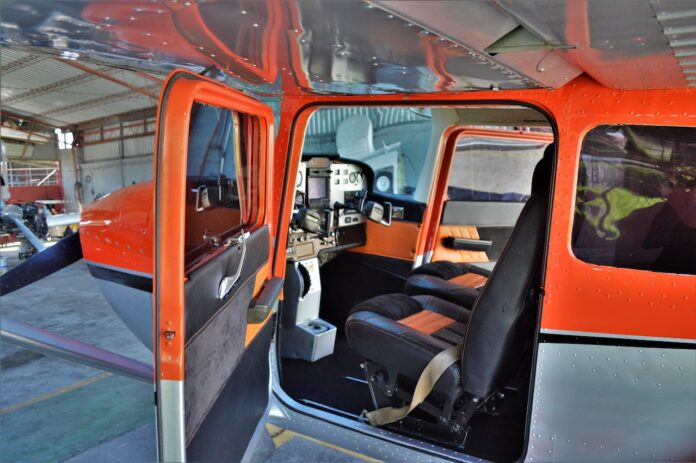Owning your aircraft can be an exciting and rewarding experience for hobbyists and businesses. However, there are quite a few things to consider before acquiring your plane. From purchasing an aircraft to ongoing costs and maintenance requirements, there is a lot you need to know about becoming an aircraft owner.
How Can You Buy an Aircraft
Financing
Financing options for buying an aircraft include:
● Paying cash.
● Taking out an aircraft loan.
● Lease financing.
● A lease-to-own agreement.
Your financing will either include a loan with a downpayment of generally 20% with an interest rate depending on your credit history, score, income, age, and aircraft type. Lease financing means you make fixed monthly payments for the right to operate the aircraft while the leasing company retains ownership. A lease-to-own agreement allows you to apply some portion of the monthly payments toward eventually purchasing the aircraft outright.
Finding the Right Type of Aircraft
Choosing the right aircraft type for your needs will depend on your budget, the number of passengers, the distance of typical flights, landing requirements, and speed preferences. The options range from small to large luxury jets. Consider acquisition costs, fuel efficiency, and maintenance costs for different models.
Aircraft Inspection
When inspecting a used aircraft, check the condition of elements like the airframe, avionics, instruments, propellers or turbines, airframe, engine logbooks, and aircraft lights. Check if there are any major damages. Have a certified aircraft inspector thoroughly check the plane before you make a purchase.
What You Need to Know About Owning Your Aircraft
Costs & Expenses
The costs associated with owning an aircraft include financing payments, fuel, hangar rental fees, insurance premiums, property taxes, maintenance, repairs, and regular inspections. Fuel costs alone for a twin-engine jet can be $200-$500 per hour. Maintenance and repairs can easily cost a small jet $50,000-$100,000 per year. Hangar fees typically range from $200-$1000 per month. Insurance costs $10,000 per year for a single-engine piston plane and $200,000 or more for a business jet.
Legal Requirements
Most countries’ legal requirements for aircraft ownership include obtaining an airworthiness certificate, aircraft registration, and pilot certifications. You must also develop operating policies and procedures, including a maintenance program, record-keeping, and scheduling system. Proper aircraft operations involve flight schedules, handling, passenger briefings, ground operations, and flight planning considerations such as weight and balance calculations.
How to Manage Aircraft Operations
Aircraft maintenance tips include:
● Following the manufacturer’s recommended inspection and servicing schedules.
● Keeping logs of all maintenance and repairs.
● Using properly certified aircraft technicians and mechanics.
● Even learning to do some basic maintenance yourself.
For example, you can save money by making oil changes, brake servicing, cleaning propellers or pitot tubes, and replacing basic parts like air filters. However, having licensed personnel for required inspections and most mechanical repairs or part replacements would be best.
Aircraft Maintenance Tips
Regular Maintenance Importance
Following the recommended maintenance schedule for your specific aircraft make, and model is critical to keep it in safe working condition.
DIY Maintenance Tips
Certified aircraft technicians and mechanics should only perform regular inspections and servicing. However, there are a few basic tasks you can learn to do yourself to save money, including:
● Aircraft cleaning: wipe down wings and fuselage, clean windscreens and cabin windows, and vacuum upholstery and carpets.
● Replacing air filters: check and replace paper air filters for engines, heaters, and pressurization systems. Dispose of used filters properly.
● Tire pressure checks: check tire pressures with a calibrated aircraft tire gauge and inflate to recommended PSI.
● Battery maintenance: check fluid levels in wet cell batteries, clean terminals, and charge batteries if needed.
● Propeller care:
o Wash and wax propeller blades.
o Check for dents or nicks.
o Call a mechanic if found.
● Pitot tube cleaning: carefully unclog pitot tubes with Q-tips and pipe cleaners to maintain proper air pressure readings.
● Oil and fluid changes: change engine oil, coolant, hydraulic, and brake fluids as specified in the maintenance manual. Dispose of used fluids properly according to regulations.
Maintenance Resources
Always use aircraft-rated supplies, fluids, filters, and parts. Never substitute standard automotive parts for aircraft, as they are not approved for flight and could endanger safety. Keep detailed records of all self-performance maintenance in the aircraft logs.
Conclusion
While owning and operating your private aircraft certainly has its privileges, many responsibilities come with it. If you go in with realistic expectations about the costs, time, knowledge, and effort required to operate an aircraft properly and safely, your experiences as an aircraft owner can be very rewarding. Do your research, connect with other aircraft owners, choose a good aircraft type for your needs, and commit to staying on top of all maintenance and legal requirements. Following these tips will help ensure you have a positive and safe experience owning and operating your private aircraft.


